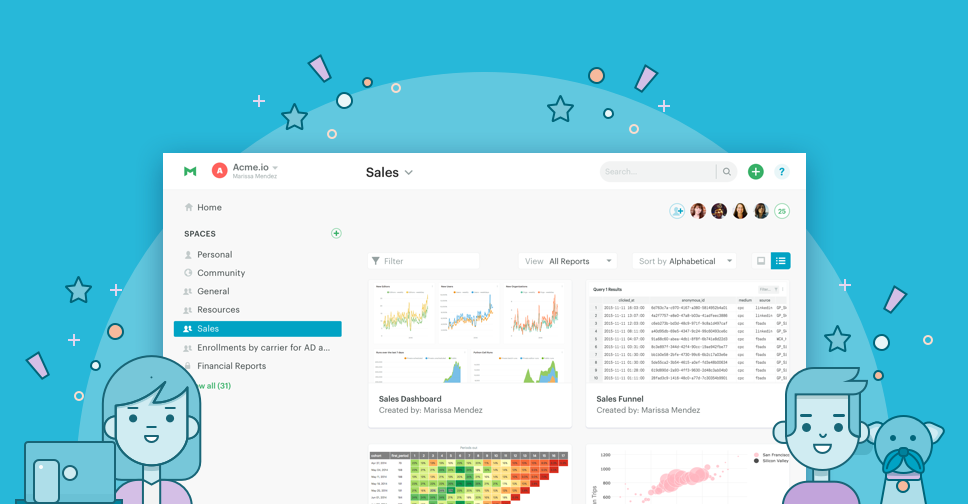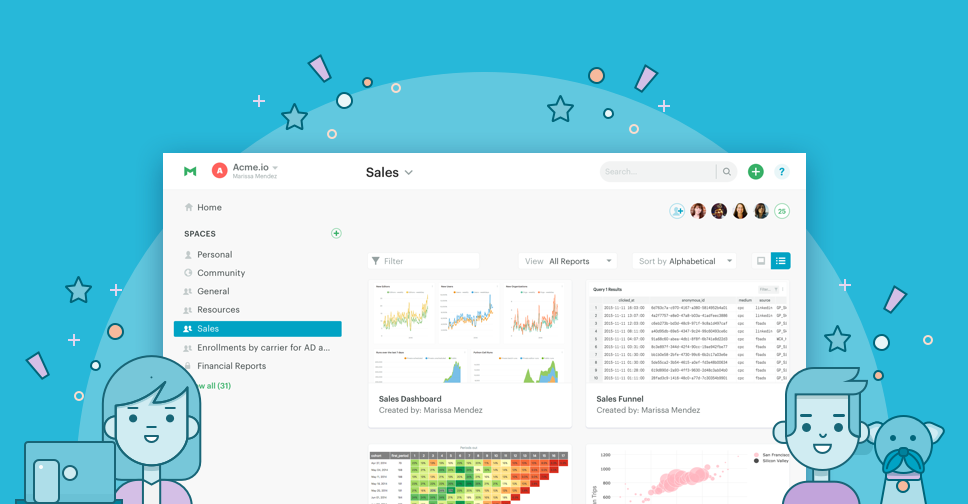
A trio of new features is launching today: Definitions, Spaces, and Access Controls are all designed to create a tight-knit data culture by bringing together teams throughout your company.
As analysts use Mode to turn data into answer after answer, there's an increasing need to maintain consistency across dashboards, organize ad hoc analysis, and streamline access. Together, the new features help analysts build a trusted data platform that puts analysis in the hands of every team.
Spaces: faster access to analysis
When you log into Mode, you'll be welcomed with an entirely new home page. The new Home tab puts Recently Viewed and Starred reports front-and-center for instant access. New report preview images help you find what you're looking for.
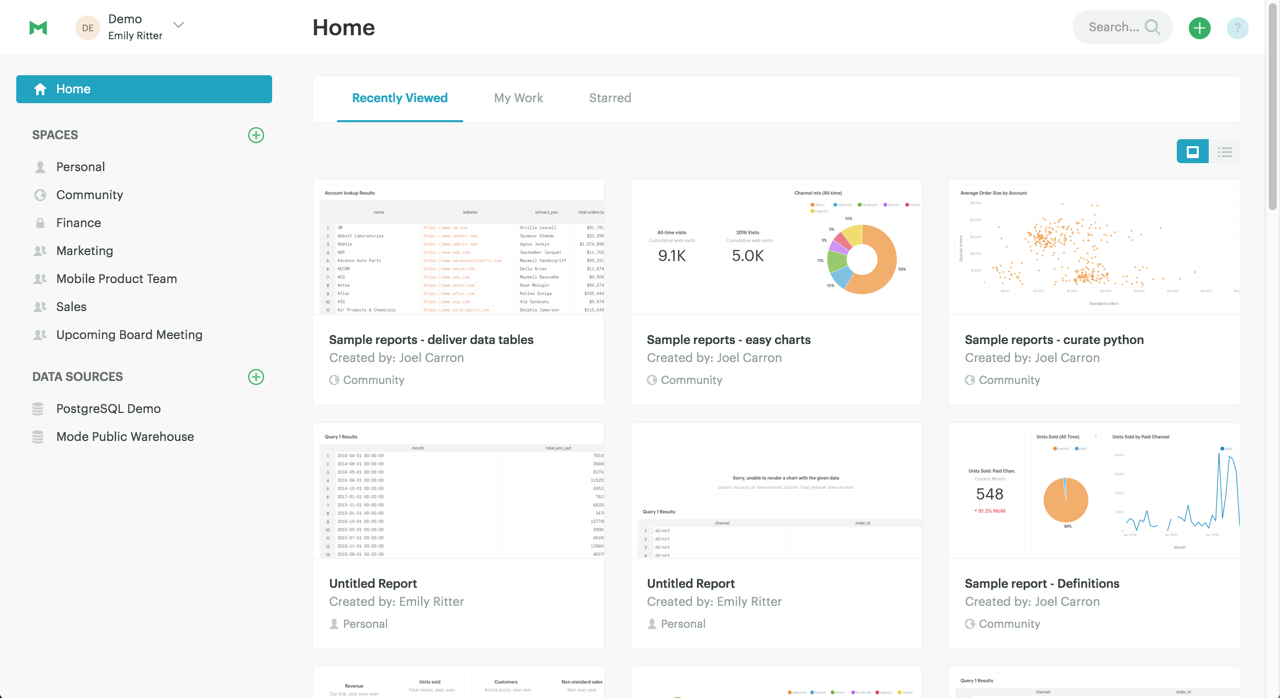
Spaces, which organize analysis for teams and projects, can be used to give Marketing, Sales, or Operations teams easier access to their go-to dashboards. Or, use a Space to curate ad hoc analysis for projects like an upcoming board meeting or a tough product decision—and keep cross-functional teams in sync. For existing customers, Lists have seamlessly migrated to Spaces.
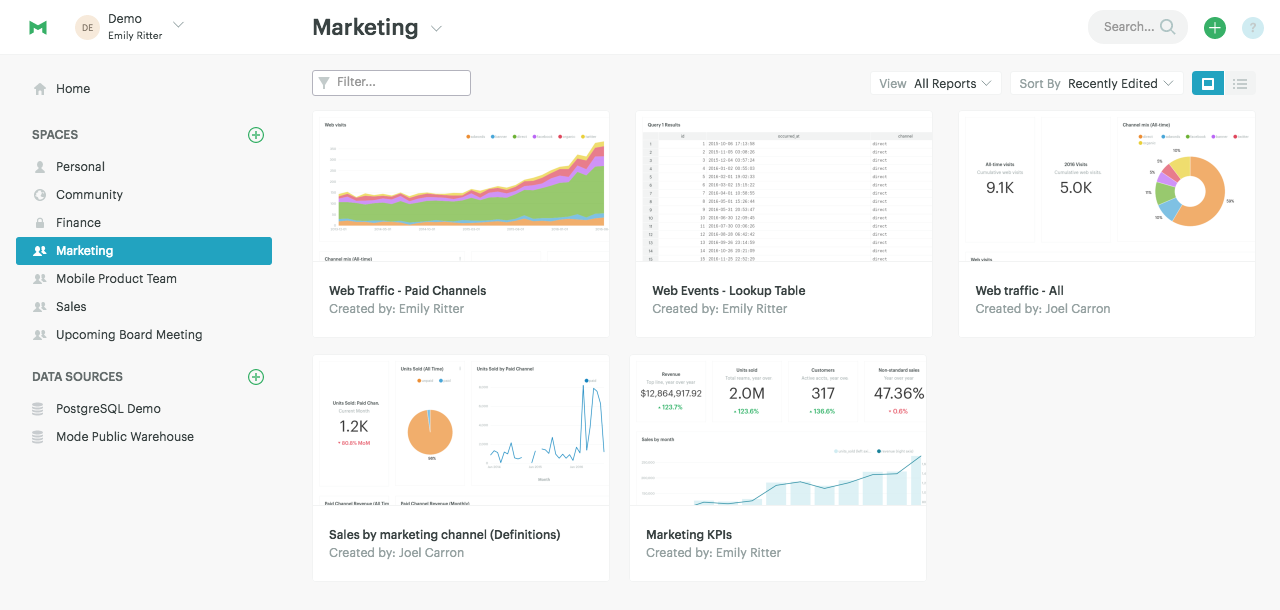
When you start a new report, it begins its life in your Personal Space. Anyone in your organization can view the report if you share the URL. To make reports discoverable, move them to a shared Space.
Definitions: save time, build trust
Below Spaces you'll see your organization's data sources. Here, you can start to build out Definitions. Definitions are custom, SQL-based business logic that can be referenced across the entire platform.
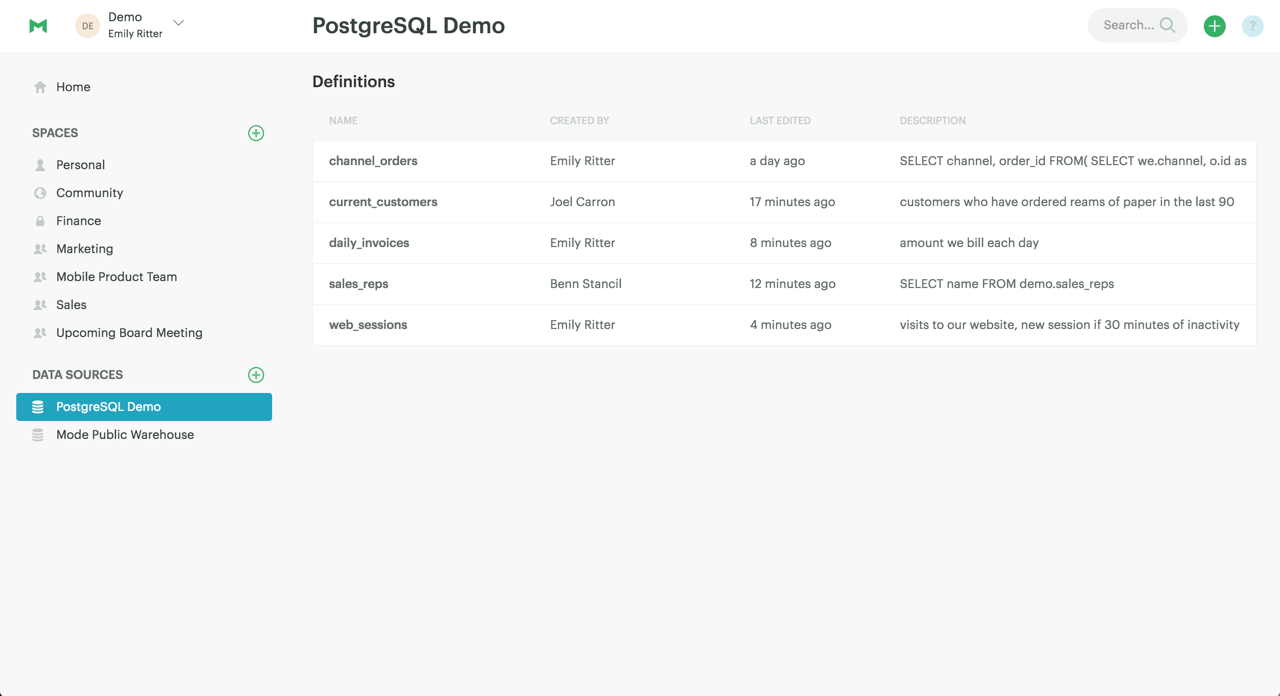
When you find yourself rewriting the same long queries or common table expressions, save each one as a Definition. Then, rather than rewriting dozens of lines of SQL, reference the Definition using the following syntax
{{ @definition_name }} , just like you would a table in your database:
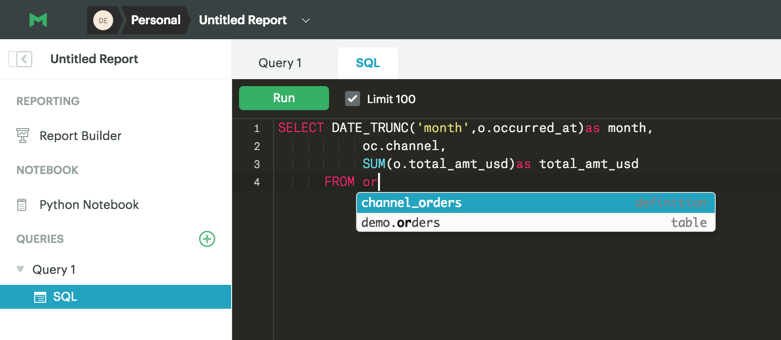
Beyond saving time while writing queries, Definitions can help your team establish analytical consistency. In the course of developing this feature, we've established 30+ Definitions for our own internal analyses. From a 114-line query that calculates our invoices, to a 19-line query that joins together data from Facebook, Adwords, and other online advertising channels to calculate daily spend, we've built Definitions for every team at Mode.
With Definitions, we know that any report involving invoice data is calculated in exactly the same manner, regardless of who built the report. And when it comes to marketing spend, we've put analytical work into the hands of the domain expert. She's spending less time on the nuances of the database and the joins necessary just to get to a starting point, and more time digging into areas to optimize.
And, finally, schemas change. Constantly. Rather than waiting for a question about numbers that don't look quite right, or panicked emails about an obscure yet broken dashboard, simply update the Definition in one central place. The update will propagate through the platform automatically, saving you countless hours of work.
Access Controls: new security features
Since good things come in threes, the launch of Spaces and Definitions is accompanied by new security features for growing organizations. You can limit access to Spaces in order to control who see can what. A great use case for this is a limited Space for financial data: invite just the people who should see this sensitive data.
In the coming days, we'll be adding database-level controls to allow organization administrators to designate who can and can't query a connected data source. Combined, view access and query access provide fine-grain control over your organization's data. We're also rolling out support for SAML to power more single sign-on providers.
Get the new features
Definitions and Access Controls are Plus Plan features. For more information about getting started with the Plus Plan, request a demo or sign up for a 14-day free trial.
As with all of our releases, we absolutely love your feedback and questions. Email us at hi@modeanalytics.com or click on the chat icon in the product to talk to our team.
Need more? Check out these articles in our documentation:




